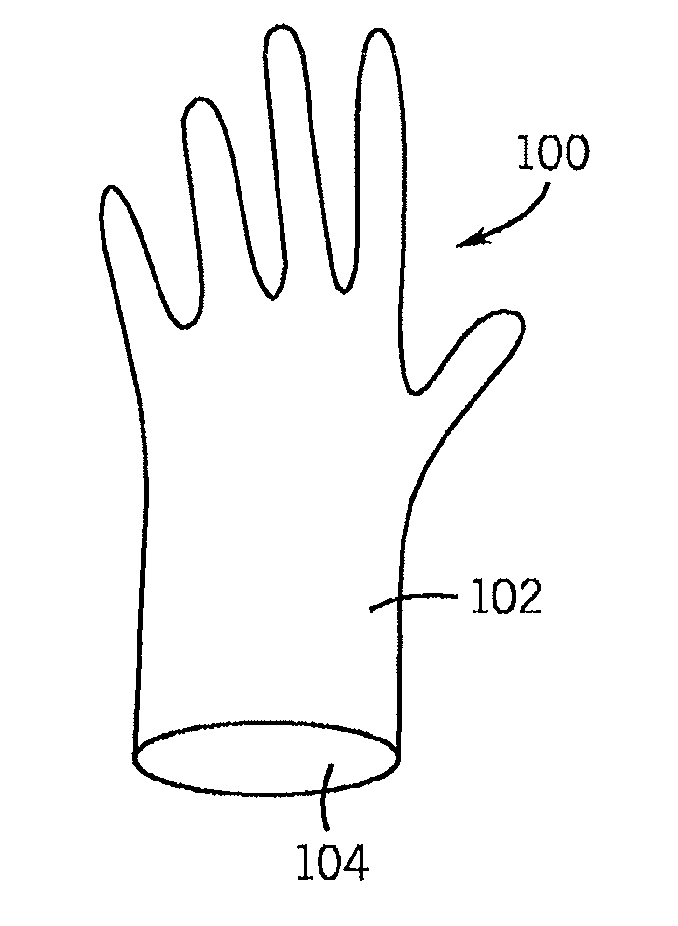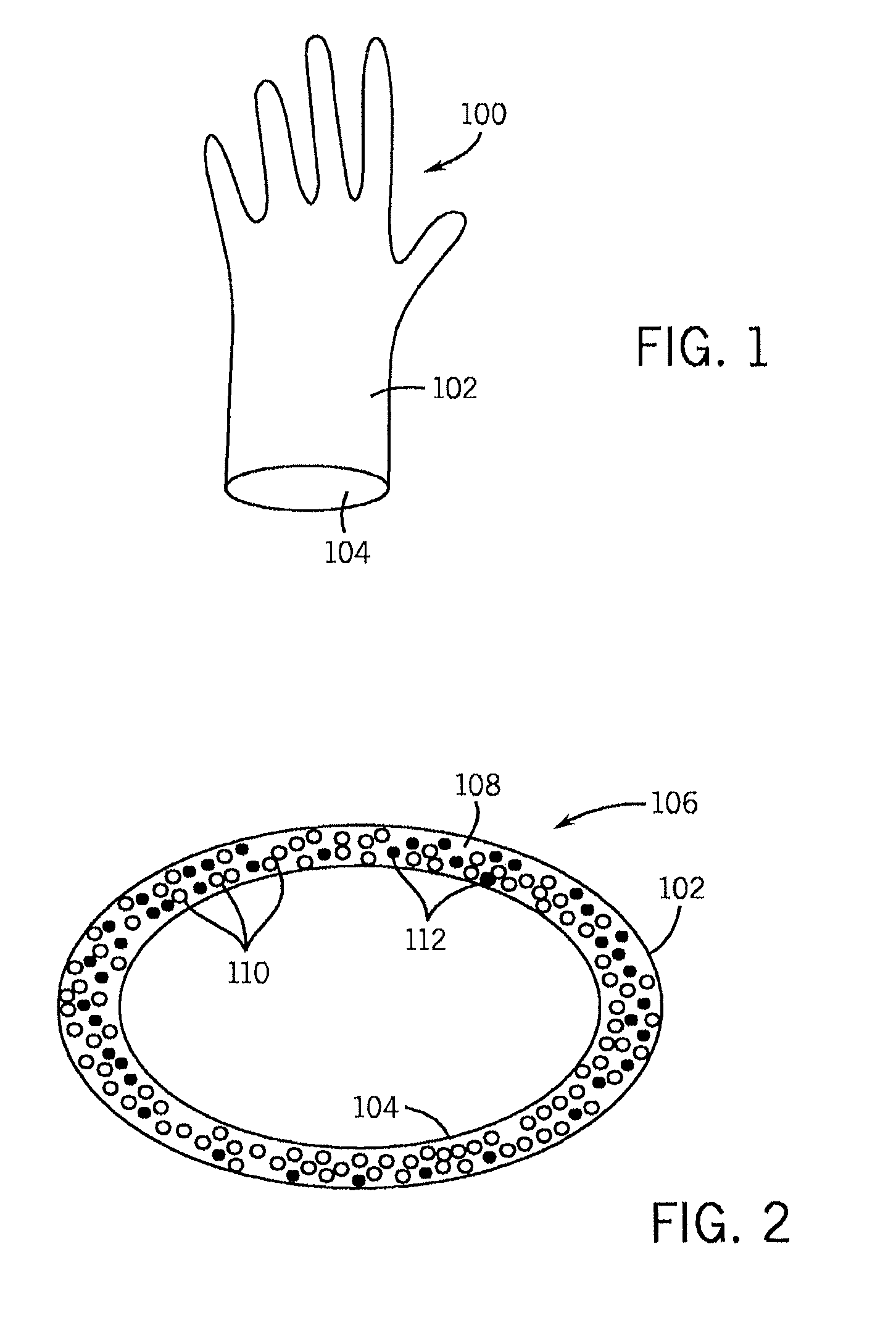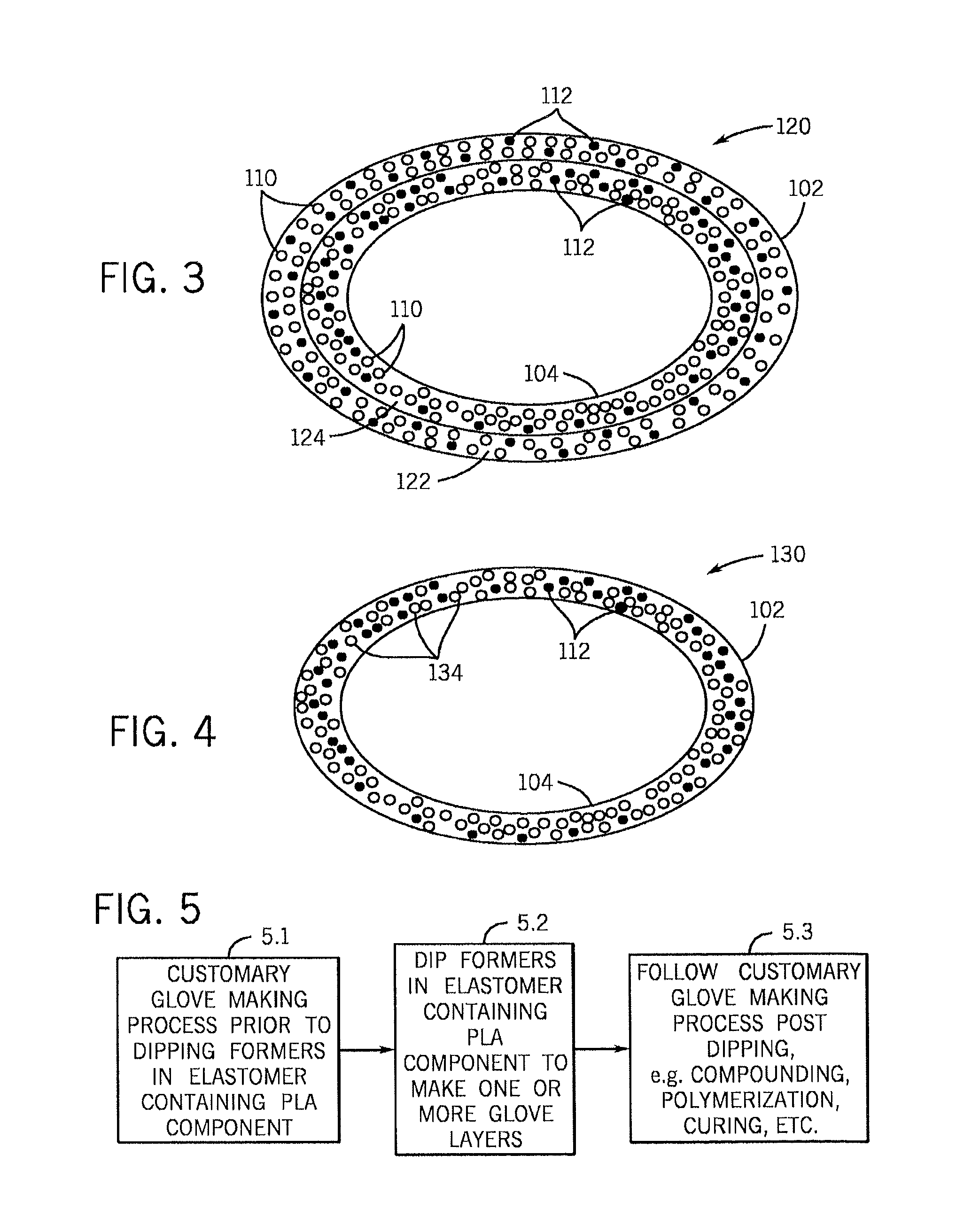Polylactic acid gloves and methods of manufacturing same
- Summary
- Abstract
- Description
- Claims
- Application Information
AI Technical Summary
Benefits of technology
Problems solved by technology
Method used
Image
Examples
example 1
[0116]An organosol formulation is prepared in a laboratory by mixing 60 g of Ecorene NW-31 PLA powder (ICO Polymers), 30 g of Citroflex A4 citric acid ester plasticizer (Vertellus), 3 g of Triton X-100 non-ionic surfactant, and 75 g of Isopropyl alcohol diluent. A thin layer of the organosol was deposited on an aluminum plate; dried at about 85° C., and fused at about 200° C. for 60 seconds to form a smooth, very strong, coherent flexible film.
example 2
[0117]An organosol was prepared in a laboratory by dispersing 11.6 g of Ecorene NW-61 PLA powder from ICO Polymers, in 5 g of an Isosorbide diester plasticizer (Polysorb ID-37 from Roquette Industries), 0.2 g of Triton X-100 non-ionic surfactant, and 15 g of Isopropyl alcohol diluent. A thin layer of coated dispersion was dried at about 85° C., and fused at about 130° C. for 10 min to form an extensible, smooth, strong, clear and coherent film having a tensile strength of about 11.3 MPa
example 3
[0118]An organosol was prepared in a laboratory by dispersing 12.7 go of PLA powder Ecorene NW-31, 12.3 g of Isosorbide diester (Polysorb ID-37) in 15 g of IPA diluent. The dispersion after coating was dried at about 85° C., and fused at about 200° C. for 60 seconds to form a strong, flexible coherent film having a tensile strength of about 11.4 MPa
PUM
| Property | Measurement | Unit |
|---|---|---|
| Thickness | aaaaa | aaaaa |
| Thickness | aaaaa | aaaaa |
| Thickness | aaaaa | aaaaa |
Abstract
Description
Claims
Application Information
 Login to View More
Login to View More - R&D
- Intellectual Property
- Life Sciences
- Materials
- Tech Scout
- Unparalleled Data Quality
- Higher Quality Content
- 60% Fewer Hallucinations
Browse by: Latest US Patents, China's latest patents, Technical Efficacy Thesaurus, Application Domain, Technology Topic, Popular Technical Reports.
© 2025 PatSnap. All rights reserved.Legal|Privacy policy|Modern Slavery Act Transparency Statement|Sitemap|About US| Contact US: help@patsnap.com



